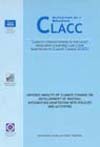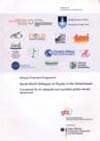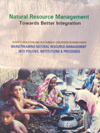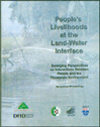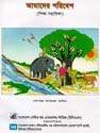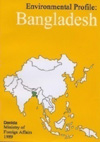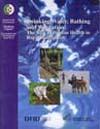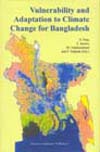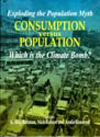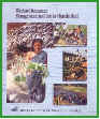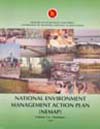Executive Summary
Agriculture plays an important role in the economy in Bangladesh. This sector accounts for 23 percent in Gross Domestic Product (GDP) and employing more than 50 percent of the labor force. It is the source of livelihood for the majority of the rural population. In the context of the increased vulnerability to agriculture as well as the agricultural labour force, the FAO has timely undertaken a project “GCP/BGD/043/EC” with financial assistance from European Commission that will extend support to Assist Landless, Marginal and Small Farmers to Overcome Soaring Input and Food Prices in Impoverished Areas of Bangladesh”. The aims of the project is to ensure food security, improve nutritional status and reduce the poverty of landless, marginal and small rural households through boosting agricultural production and improving income generating opportunities at the household and community levels. To attain the objectives, the project beneficiaries will be provided with essential crop production inputs including improved seeds (field crops and vegetables), fruit tree seedlings, fertilizers and agricultural machinery. The project will also provide small and large ruminants, poultry birds, animal feed and materials to build animal sheds. Support to fishers will be in the form of fish seeds, fish feed, lime, fishing boats and nets, life saving equipment to facilitate aquaculture and open water fishing. The input support will be complemented with the standard training on modern agricultural practices, increased technical knowledge, existing private sector entrepreneurial advantages and other market-related information, and nutritional education and communication through the farmers’ field schools (FFS) and strengthening of the community-based producer groups.
The main purpose of this baseline survey is to generate baseline information e.g. existing social, economic, health, agriculture, environmental and livelihood conditions of the community people, especially the poor and disadvantaged people of the FAO-EC programme areas. The study results have established a benchmark within the project areas and it would provide an opportunity to collect follow-up data and information over the life of the project to measure effect and impact of project interventions/activities.
Beneficiary Categories are:
A total of 82,020 beneficiaries from landless, marginal and small farmer group in 20 upazilas of 12 districts would be provided the following types of inputs for improved production and better livelihood.
1. Crop (Rice, Purse, Maize, Machinery, LLP) - 25,700 beneficiaries
2. Horticulture - 40,000 beneficiaries
3. Fisheries (Boat, Net) - 820 beneficiaries
4. Aquaculture (Carp/Gift, Golda/Bagda) - 7,800 beneficiaries
5. Livestock (Poultry, Goat, Cow) - 7,700 beneficiaries
From the total beneficiaries, a sample of 3940 beneficiaries households have been surveyed to acquire baseline information of the beneficiaries on socio-economic condition, livelihood, agriculture, fisheries and livestock.
Key Findings are:
i) Occupation of Household Head and Other Members
Agriculture is the major primary occupation of 43% household heads followed by day labor (16.6%), Business (10%). About 30.4% of the households are engaged in other primary occupations of which 7% households are engaged in fishing, fish culture and shrimp culture, 4.8% in rickshaw and van puller, 3.7% in house work, 3.5% in service and 11.4% in other occupations.
ii) Household Income & Expenditure
Household Income
Major source of household income is agriculture contributing 27.7% of the total annual income, followed by fishing 13.4%, day labour 12.7% and small business 11.7%. Income from fishing/aquaculture is significantly higher in shrimp culture area in Fakirhat, Rampal and Debhata upazila. Household income in Daulatkhan and Tazumuddin upazilla is also higher probably due to sea fishing and Hilsa fishing.
Household Expenditure
In all Upazilas of the study area, food accounts for the lion share in household expenditure amounting to 44%, which is followed by expenditure for agricultural inputs (11.2%), fishing and aquaculture inputs (6.1%), medical treatment (5.1%), educational expenditure (4.5%), loan payment (4.2%) and clothing (3.8%).
iii) Food Consumption Pattern
Average quantity of per capita food consumption in the project area is 861.9 gm which is less than the national consumption of 946.3 gms (rural). The calories intake is 2329.72 kilo cal which is higher than the national figure 2253.2 (BBS, 2005).Rice is the major food item contributing more than 50% of the total food intake and the same is also with calorie values. Other cereals contribute only 5%. It is also found that women are taking less food than male.
iv) Household by disease status for the last one year
Most common and frequent diseases that the household members sufferer from, are Cold Fever, Diarrhea and Dysentery followed by Skin diseases, Asthma and Malaria. Children are the most sufferers with 3.3 Children suffering per household followed by female members (2.6 members per household).
v) Land uses for agriculture
Survey showed that 54.3% households have no own land for agriculture, while only 18.3% household have own land upto 0.5 acre for agriculture. 12.3% and 10% households have own land for agriculture in the range 0.5 – 1.0 acre and 1.0 – 1.5 acre.
Average size of own land used for agriculture is 0.89 acre of which 72.3% households have land size of < 0.5 acre. All types of ownership are present in the study area. The proportion households under different ownership having land area of 0.5 acre for agriculture are 77% shared in, and more than 90% shared out, mortgage-in, mortgage-out, contract-lease and other types of ownership.
vi) Production of crops
A summary of production and prices of cereal crops, vegetables, pulses, oil seeds, spices and fruit crops has been shown in the survey report. Among cereal crops, average production of all paddy rice of modern varieties is satisfactory (2.6-5.1 t/ha) except maize. Average yield of hybrid maize is low (4.7 t/ha). Farmers should be trained up on the use of balanced fertilizers, quality seeds at optimum time of planting following best management practices.
Average production of mung bean, tomato, brinjal, lady’s finger, onion, garlic, ginger, chilli and coriander is low. Great emphasis should be given on the production techniques and especially on good varieties, soils, fertilizers & crop management in maximizing the production of these high value crops. Production situation of tuber crops (12.4 t/ha) is also not satisfactory.
There is a great prospect of promoting the cultivation of fruit crops in the coastal region. But the production situation is not all satisfactory.
vii) Fertilizer use in crop production
Fertilizers being used by target households in the cultivation of cereal crops is somewhat satisfactory. But the use of MOP fertilizer is low compared to urea. In some cases, high doses of fertilizers (especially urea) are being used in potato and cauliflower. But the required quantity of MOP is essential for obtaining good and quality product creating resistance against the incidences of pests and diseases. Farmers do not have technical knowledge and experiences about the role of different fertilizers on crop production and hence they should be encouraged and trained up on the use of balanced fertilizers and maintenance of soil health for improved farming.
viii) Problems faced in agriculture
Survey showed that availability of good seeds & standard fertilizers, high prices of fertilizers and poor knowledge in balanced fertilization are the major problems being faced by the target households in the cultivation of different crops in the coastal region. The survey findings on problems are summarized as follows:
Availability/scarcity of standard fertilizers> availability of good seeds> high price of fertilizers> poor knowledge in balanced fertilization> natural calamities> incidences of pests & diseases.
Among the surveyed locations, severity of problems are ranked as follows:
Terokhada> Baufal> Debhatta> Tungipara> Mehendiganj> Alfadanga
More study including some case studies is needed to identify the real problems with extent and severity affecting the agricultural practices in the project areas for improving coastal agriculture in attaining food security and better livelihood.
ix) Aquaculture production and price
Production:
Production by species/(kg) in different households such as carp/gift, galda, bagda for different fish species including Prawn and bagda are shown in the in the report. Per ha/kg of local carp and exotic carp in all the three categories of households showed highest in comparison to other spices both fish and shrimp (galda and bagda). Among the different upazillas, production varies in all the categories. These results could be considered as bench mark and would be useful indicators to verify the output of projects in terms of production. The average per ha/kg productions of local Carp, Exotic Carp, Thai puti, Telapia and pangas are 673.9, 545.1, 499.3, 9, 977.7,450 kg respectively. The average per ha/kg production of Golda and Bagda are 307 and 198 kg.
Price:
Price by species in tk/kg has been shown in all the categories of households. The price of galda and bagda are highest in all the categories of households. Pangas is the lowest value fish species rages from 45 taka to 100 taka. The average price kg/taka of Golda and bagda are 484 and 423 taka.
x) Household affected by sidr/ailla and their loss/damage
(i) Household affected by sidr/aila upozilla wise loss are shown in the report.
All the upazillas except Debhata showed 100% damaged reported by this survey, also recorded per households loss is 4600 taka. Loss in different upazillas is shown in the the report.
Household affected by the sidr and aila in total.
Here 89% of the household in southern upozillas are affected whereas only 11% of households are become safe.
iii) Loss/damage by Sidr/Aila
Household damaged in carp (56.8%) is lower than the golda (69.8%) and the bagda (57.30%). House hold affected by Sidr/Ailla in Upozilla wise area is generally high in carp/gift sector.
Training Received
Carp/Gift Households: Training received in the following areas shown in the Annex 31:
- Fish culture: 39.41%
- Shrimp culture : 6.47%
- Fish hatchery technology: 1.76%
- Fry raising/hatchery management: 2.94%
- Disease management: 14.11%
xi) Productivity of livestock
Production status of the livestock (cows, chicken and ducks) in the surveyed areas is shown in the report. The data revealed that the average per day milk yield (litres) per cow in all the Upazilas was 1.9 where Hizla and Bhedarganj Upazilas were having the highest (2.3) and Rampal and Dighalia having the lowest (0.3). The Upazilas Tazumuddin and Dosmina were having no milk production at all. As regards to egg production from chicken in Fakirhat Upazila showed the highest number (134.7) followed by Debhata (84.7) and the lowest production in Tazumuddin (32.4) whereas the mean production in all the Upazilas was 66.2 eggs. Egg production of ducks in the studied areas were higher than that of chicken. Duck egg production in Kalkini Upazila was the highest (160.8) followed by Debhata and then Fakirhat and lowest (33.8) in Daulatkhan. The average egg production from ducks of all the Upazilas was 78 which was considerably higher than that of chicken. However, egg production in the study areas were similar to the national average of indigenous poultry.
xii) Training of farmers in livestock rearing
Livestock rearing by the farmers in the study areas are traditional and because of the poverty and illiteracy they do not take proper care and management of livestock and as a consequence the animals suffer from malnutrition and low productivity. Therefore, it is important to give them training in rearing livestock for adoption of the improved system for better production. For this purpose it becomes helpful to gather information on the status of reception of training of farmers on livestock rearing. Based on that information training needs of the farmers be identified and take action accordingly.
Survey showed number of households and their percentages received training on rearing different species of livestock. Data showed that only 13.6% farmers received training on livestock rearing and a very high percentage (86.4%) of farmers did not receive any training on livestock rearing. Among the trained farmers the highest percentage (6.4%) received training on cattle rearing. It is revealed from the data that there is a necessity of training the farmers in the study areas on livestock rearing, particularly most essential on goat, chicken and duck rearing.
As regards to farmers’ opinion on the need for training on individual livestock, as shown in Table 63, the highest percentage (34.4%) of them said that they need training on chicken rearing. This was followed by cattle rearing (21.1%) and then very close to it was duck rearing (19.5%). This expressed their interest in poultry rearing and cattle rearing.
xiii) Problems in rearing livestock
Problems of rearing livestock in the study areas are manifolds. However, the important problems have been recorded and are to be mitigated on the priority basis in order to improve the productivity of livestock and increase income and livelihoods of the farmers. Data in Table 64 showed that among all the problems disease (37.4%) occupied the highest position followed by shortage of feed (16.3%) which occupied the second position. Lack of medicine and treatment was in third priority problem in the study areas. |






